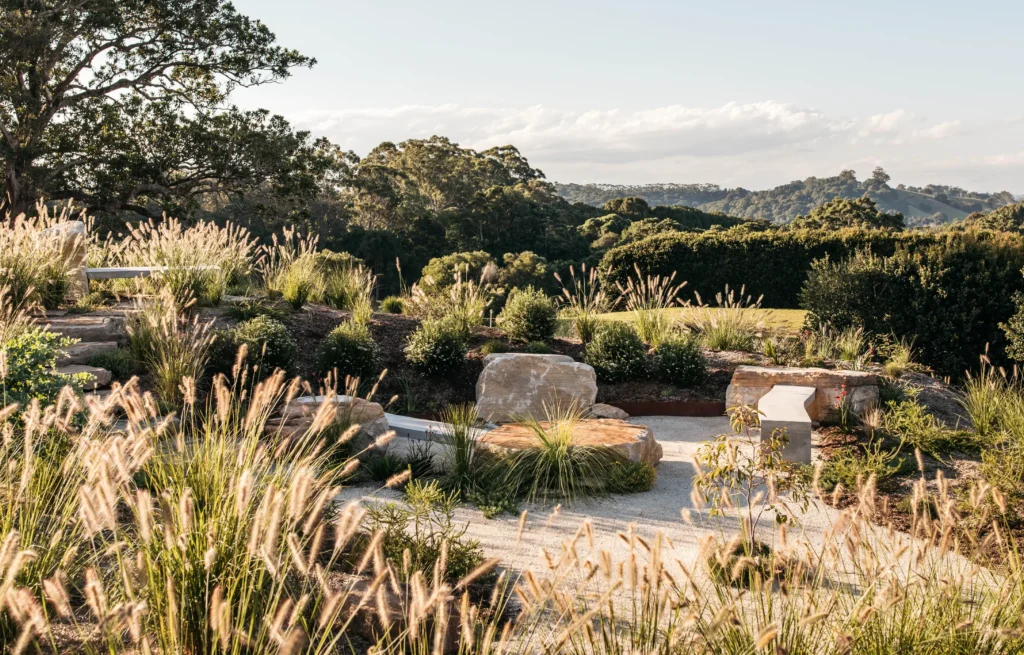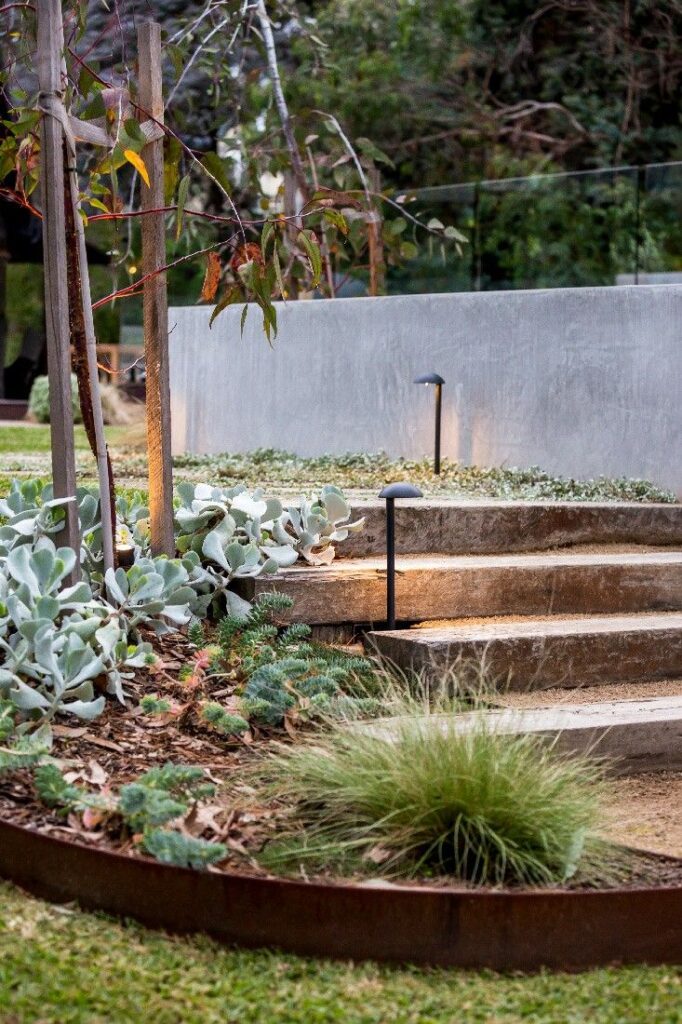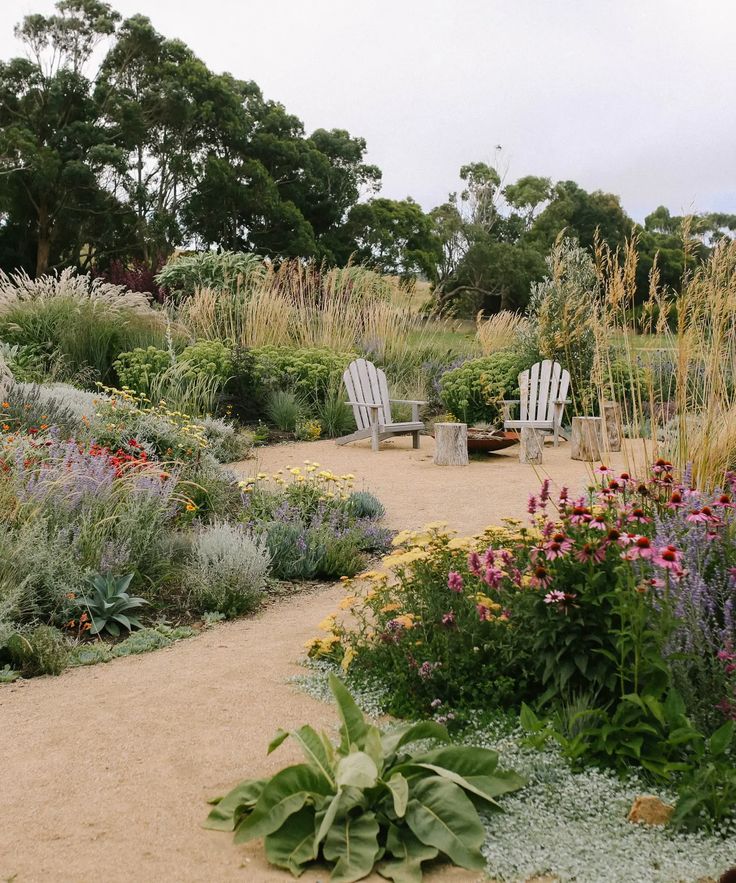The term naturalistic garden often comes up in conversations about native landscaping. Think of a naturalistic garden as one that replicates the beauty and spontaneity of the landscapes just outside your door. These gardens feel organic and effortless—not overly manicured but thoughtfully designed to evoke a sense of the wild.
Rather than imposing a rigid structure, naturalistic gardens listen to the land. They feature indigenous plants—species that naturally occur in your region—and are designed to mirror the local environment in form, function, and aesthetics.

Let’s explore the many compelling reasons to shift toward native and naturalistic garden design:
One of the strongest arguments for native landscaping is sustainability. Native plants are already adapted to local rainfall patterns and climate conditions, meaning they generally require less water, fewer chemical fertilizers, and fewer pesticides to thrive.
With the growing impacts of climate change, traditional lawns and high-water-demand gardens are becoming increasingly unsustainable. Native gardens conserve water, improve soil heal
Because native plants are naturally suited to their environment, they tend to be more resilient and less demanding than exotic or non-local varieties. Once established, native landscapes require minimal maintenance—less pruning, fewer inputs, and no special treatment to survive local pests or weather swings.
This makes native landscaping perfect for busy homeowners or anyone looking to reduce the effort and cost of upkeep without sacrificing beauty.

Lawns have long been seen as a hallmark of traditional landscaping, but they come at a high environmental cost. Conventional turf grass often requires frequent mowing, watering, fertilizing, and pesticide use, all of which add up to a significant carbon and chemical footprint—not to mention the time and effort involved in maintenance.
Native landscaping offers a smarter alternative by reducing or even replacing lawn areas with low-growing groundcovers, native grasses, wildflower meadows, or natural mulch zones. These alternatives not only cut down drastically on water use and maintenance but also restore biodiversity and bring life back into your garden.
Fewer lawns mean more room for habitat, more colour and texture throughout the year, and a more dynamic, living space that changes with the seasons—without the burden of constant upkeep.
One of the most powerful benefits of native landscaping is its role in supporting local wildlife. Native plants provide critical food sources, shelter, and nesting sites for birds, butterflies, bees, and other beneficial insects and animals that have co-evolved with these environments.
By incorporating native flora into your garden, you’re helping to restore essential habitats that are rapidly disappearing due to urban development and monoculture landscapes. You might be surprised how quickly your yard becomes a vibrant sanctuary—with monarch butterflies fluttering in, bees buzzing happily around native blooms, and birds returning to nest and forage.
In essence, your garden becomes more than just a personal space—it becomes a living part of the ecosystem, a place where biodiversity can flourish again, even in small suburban or urban plots.
As climate patterns shift and weather becomes more unpredictable, the resilience of our landscapes is being put to the test. Native plants offer a crucial advantage: they are naturally adapted to local climate extremes—whether it’s drought, heavy rains, heatwaves, or frost.
Because these plants have evolved alongside the local environment, they are better equipped to handle fluctuations in temperature, rainfall, and soil conditions without constant human intervention. That means fewer replacements, less water use, and lower maintenance costs—even as climate stresses increase.
By designing gardens that are climate-resilient, we’re not just protecting our outdoor spaces—we’re contributing to a larger, collective effort to build environmental resilience from the ground up.
One of the hidden perks of native landscaping is its ability to reduce the spread of invasive weeds. When you fill your garden with well-adapted native plants, they naturally outcompete non-native and invasive species by establishing strong root systems and occupying available growing space.
This creates a sort of living mulch—dense, healthy plant communities that leave little room for aggressive weeds to take hold. Not only does this mean less weeding for you, but it also helps prevent invasive species from spreading beyond your garden into local ecosystems, where they can cause real ecological damage.
In other words, native landscaping doesn’t just benefit your own space—it acts as a protective buffer for the wider environment.


Choosing native plants doesn’t mean compromising on beauty—in fact, it’s quite the opposite. Native landscapes can be stunningly diverse, rich in texture, colour, and seasonal change. From the soft sway of native grasses to the vibrant blooms of local wildflowers, these gardens offer a natural elegance that feels both timeless and deeply rooted in place.
There’s something profoundly beautiful about a garden that looks like it belongs—one that blends effortlessly with the surrounding landscape and changes organically throughout the seasons. Native gardens can be designed to feel wild and free, or more structured and intentional—naturalistic doesn’t mean messy, it means authentic.
And best of all? These gardens often become places of emotional connection, helping people reconnect to their environment through beauty that’s meaningful and local.
Healthy soil is the quiet engine of any thriving landscape, and native plants play a vital role in nurturing it. Unlike many ornamentals or imported species that can deplete or compact the soil, native plants often work in harmony with local soil microbes and fungi, creating a living underground network that improves nutrient cycling, enhances structure, and boosts organic matter over time.
Many natives have deep root systems that break up compacted soil, allow better water infiltration, and prevent erosion—especially important on sloped or flood-prone sites. By planting natives, you’re not just growing a garden; you’re healing the soil, making it more resilient, more fertile, and better able to support life—for years to come.
Native landscaping doesn’t just benefit the environment—it can also add significant value to your property. More homebuyers today are looking for landscapes that are low-maintenance, eco-friendly, and beautiful year-round, and native gardens check all those boxes.
By reducing long-term upkeep costs, minimizing water bills, and showcasing thoughtful, locally inspired design, a native garden makes your property stand out in a meaningful way. It sends a message that your home is sustainable, well cared-for, and connected to its surroundings—qualities that many buyers now actively seek.
A thriving, naturalistic garden can transform curb appeal, enhance outdoor living spaces, and leave a lasting impression—not just on visitors, but on the local ecosystem too.

Last but not least, native landscaping fosters a deep sense of connection—to nature, to place, and to us. In a world where so many feels disconnected and fast-paced, creating a garden that reflects the rhythms of your local environment becomes an act of grounding and mindfulness.
Tending to native plants invites us to slow down and observe—to notice the return of migrating birds, the bloom cycles of wildflowers, the hum of pollinators. It reconnects us with the seasons, the soil, and the wildlife that we might otherwise overlook. And that sense of belonging, of participating in the restoration of a place, is both healing and empowering.
A native garden isn’t just a landscape. It’s a relationship—one that deepens over time and reminds us that we’re not separate from the natural world, but part of it.

Native landscaping offers a wealth of benefits that not only improve the environment but also enhance the quality of life in our own backyards. Whether it’s supporting wildlife, improving soil health, conserving water, or simply reconnecting us to the land, native gardens are a powerful and beautiful way to make a positive impact.
So, why not make your next gardening project a native one? Not only will you create a space that’s rich in beauty and biodiversity, but you’ll also be contributing to a more sustainable, resilient world.

Balga Designs respectfully acknowledges the Traditional Owners and Custodians of the land on which we work. We honour the Aboriginal and Torres Strait Islander peoples, their connection to land, water, and community, and we pay our respects to their Elders past, present, and emerging. We recognise that this land always was, and always will be, Aboriginal land.
Copyright © 2025 Balga Designs